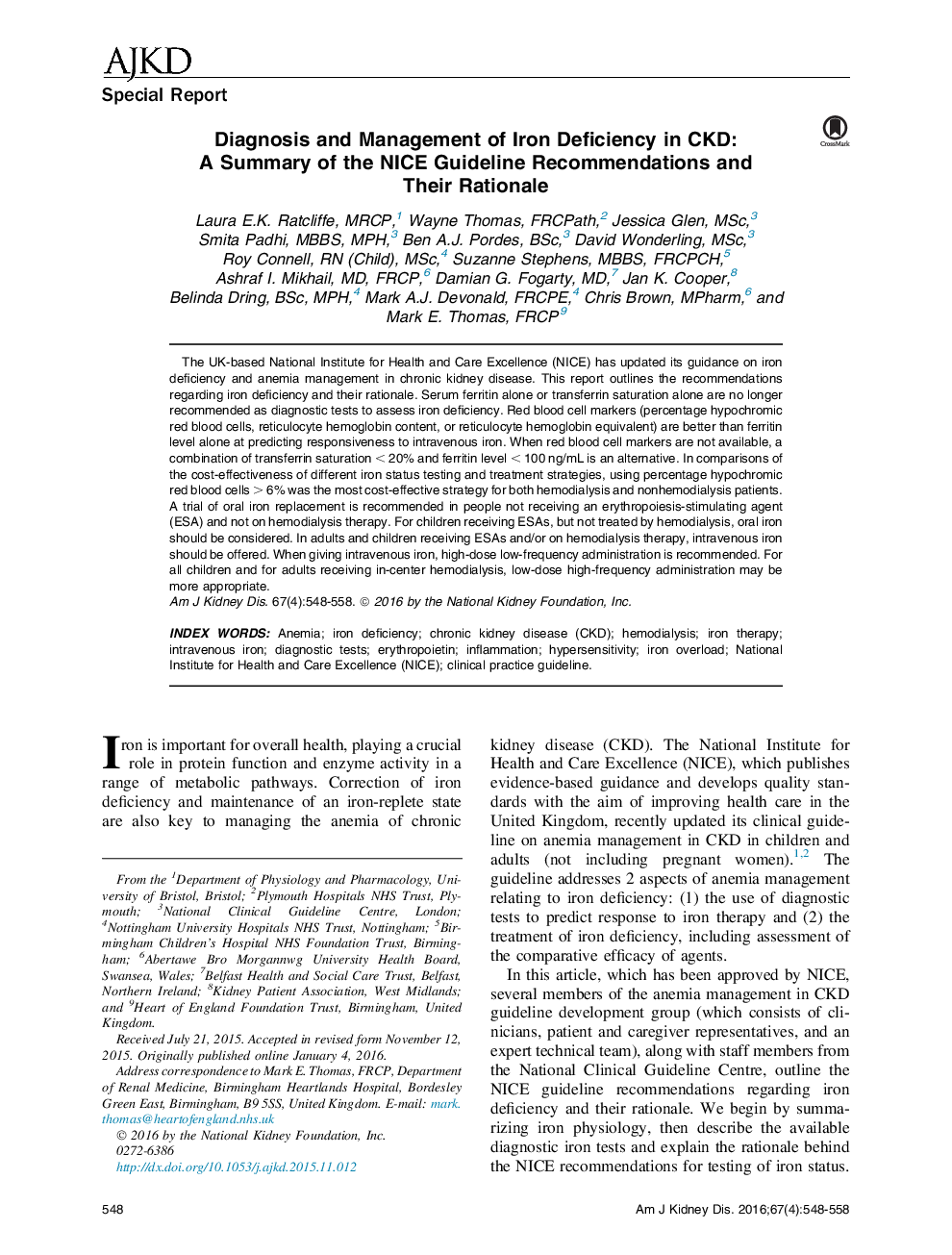| Article ID | Journal | Published Year | Pages | File Type |
|---|---|---|---|---|
| 6157033 | American Journal of Kidney Diseases | 2016 | 11 Pages |
Abstract
The UK-based National Institute for Health and Care Excellence (NICE) has updated its guidance on iron deficiency and anemia management in chronic kidney disease. This report outlines the recommendations regarding iron deficiency and their rationale. Serum ferritin alone or transferrin saturation alone are no longer recommended as diagnostic tests to assess iron deficiency. Red blood cell markers (percentage hypochromic red blood cells, reticulocyte hemoglobin content, or reticulocyte hemoglobin equivalent) are better than ferritin level alone at predicting responsiveness to intravenous iron. When red blood cell markers are not available, a combination of transferrin saturation < 20% and ferritin level < 100 ng/mL is an alternative. In comparisons of the cost-effectiveness of different iron status testing and treatment strategies, using percentage hypochromic red blood cells > 6% was the most cost-effective strategy for both hemodialysis and nonhemodialysis patients. A trial of oral iron replacement is recommended in people not receiving an erythropoiesis-stimulating agent (ESA) and not on hemodialysis therapy. For children receiving ESAs, but not treated by hemodialysis, oral iron should be considered. In adults and children receiving ESAs and/or on hemodialysis therapy, intravenous iron should be offered. When giving intravenous iron, high-dose low-frequency administration is recommended. For all children and for adults receiving in-center hemodialysis, low-dose high-frequency administration may be more appropriate.
Keywords
Related Topics
Health Sciences
Medicine and Dentistry
Nephrology
Authors
Laura E.K. MRCP, Wayne FRCPath, Jessica MSc, Smita MBBS, MPH, Ben A.J. BSc, David MSc, Roy RN (Child), MSc, Suzanne MBBS, FRCPCH, Ashraf I. MD, FRCP, Damian G. MD, Jan K. Cooper, Belinda BSc, MPH, Mark A.J. FRCPE, Chris MPharm, Mark E. FRCP,
